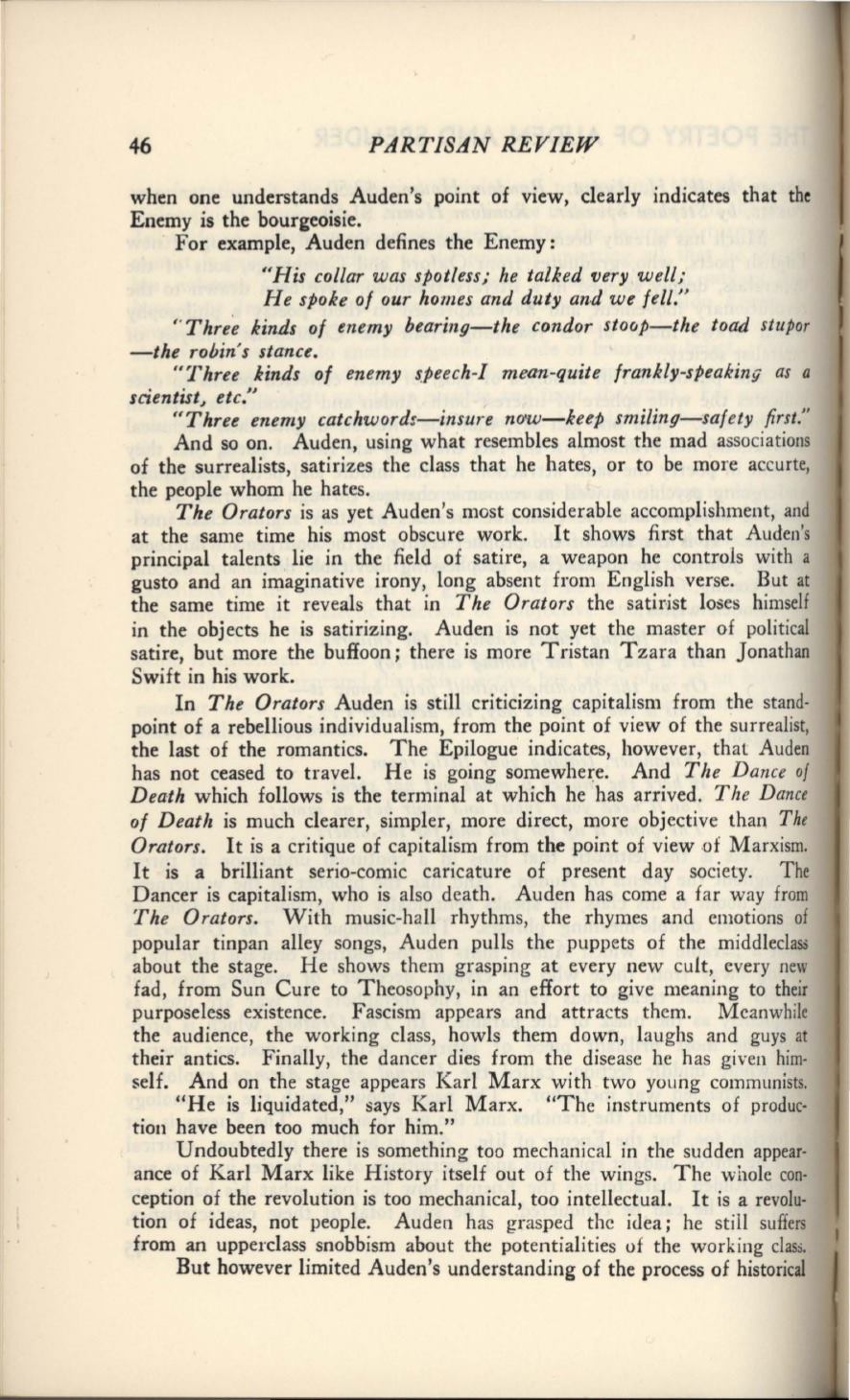
46
PARTISAN REVIEW
when one understands Auden's point of view, clearly indicates that the
Enemy is the bourgeoisie.
For example, Auden defines the Enemy:
"His collar was spotless; he talked very well,·
He spoke of our homes and duty and we fell."
'"Three kinds of enemy hearing-the condor stoop-the toad stupor
-the robin's stance.
"Three kinds of enemy s.Peech-I mean-quite frankly-speaking as
a
scientist, etc."
"Three enemy catchwords-insure nuw-keep smiling-safety first."
And so on. Auden, using what resembles almost the mad associations
of the surrealists, satirizes the class that he hates, or to be more accurte,
the people whom he hates.
The Orators
is as yet Auden's most considerable accomplishment, and
at the same time his most obscure work. It shows first that Auden's
principal talents lie in the field of satire, a weapon he controls with a
gusto and an im.aginative irony, long absent from English verse. But at
the same time it reveals that in
The Orators
the satir-ist loses himself
in the objects he is satirizing. Auden is not yet the master of political
satire, but more the buffoon; there is more Tristan Tzara than Jonathan
Swift in his work.
In
The Orators
Auden is still criticizing capitalism from the stand–
point of a rebellious individualism, from the point of view of the surrealist,
the last of the romantics. The Epilogue indicates, however, that Auden
has not ceased to travel. He is going somewhere. And
The Dance of
Death
which follows is the terminal at which he has arrived.
The Dance
of Death
is much clearer, simpler, more direct, more objective than
The
Orators.
It is a critique of capitalism from the point of view
.of
Marxism.
It is a brilliant serio-comic caricature of present day society.
The
Dancer is capitalism, who is also death. Auden has come a fa r way from
The Orators.
With music-hall rhythms, the rhymes and emotions of
popular tinpan alley songs, Auden pulls the puppets of the middleclass
about the stage. He shows them grasping at every new cult, every new
fad, from Sun Cure to Theosophy, in an effort to give meaning to their
purposeless existence. Fascism appears and attracts them. Meanwhile
the audience, the working class, howls them down, laughs and guys at
their antics. Finally, the dancer dies from the disease he has given him–
self. And on the stage appears Karl Marx with two young communists.
"He is liquidated," says Karl Marx. "The instruments of produc–
tion have been too much for him."
Undoubtedly there is something too mechanical in the sudden appear–
ance of Karl Marx like History itself out of the wings. The whole con–
ception of the revolution is too mechanical, too intellectual. It is a revolu–
tion of ideas, not people. Auden has grasped the idea; he still suffers
from an upperclass snobbism about the potentialities of the work ing class.
But however limited Auden's understanding of the process of historical


